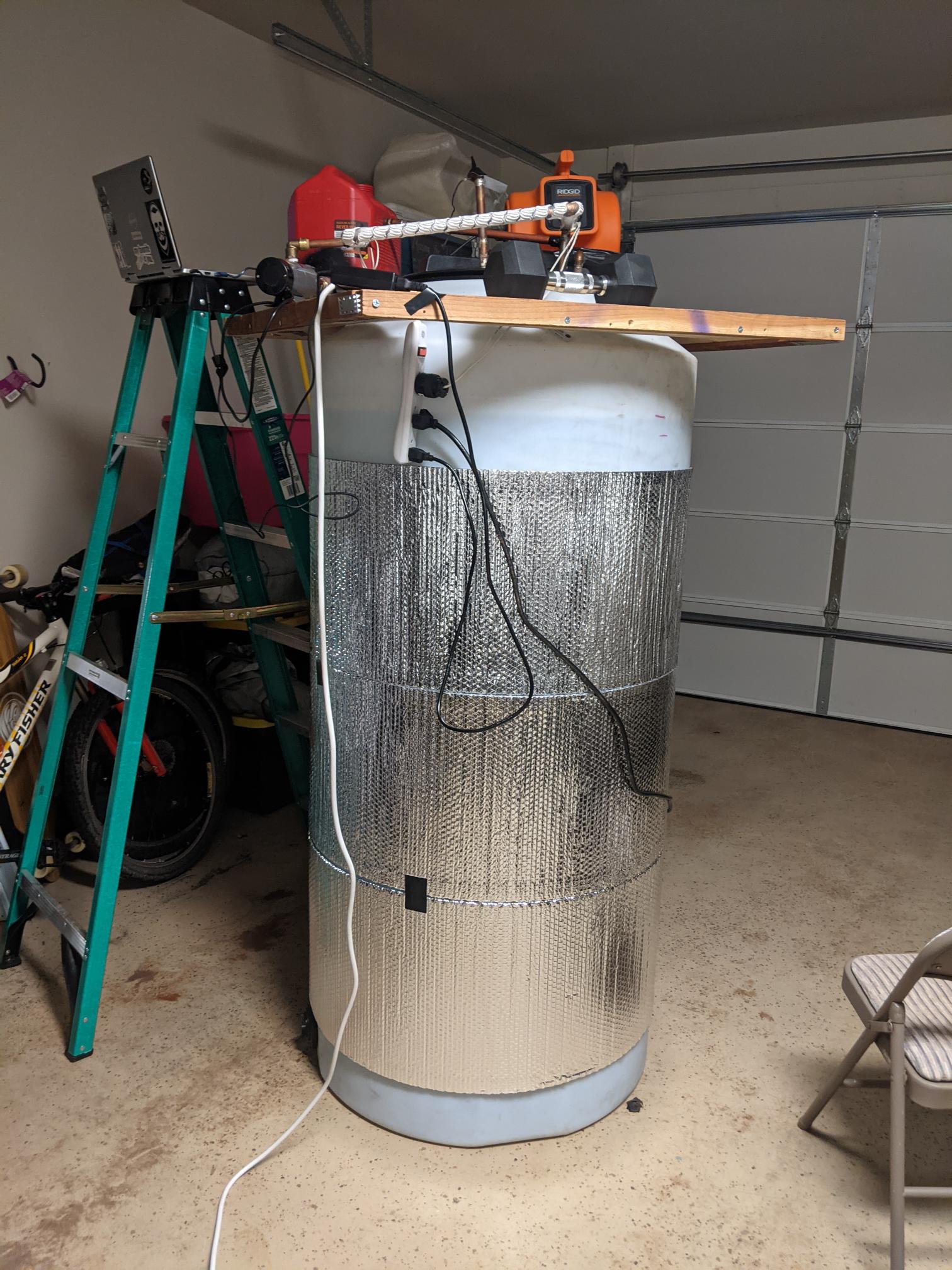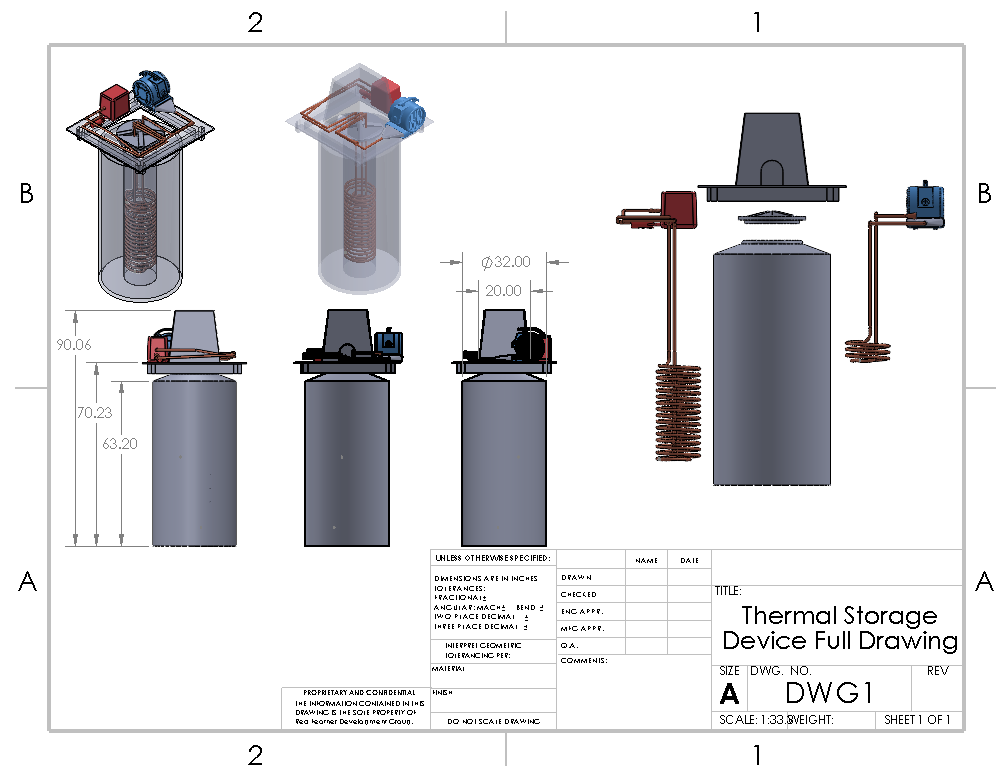Current State of the Prototype
This page includes the most current images and details for the constructed and modeled prototypes created by the team.
Final Presentation:
Attached here is an embedded youtube video of the presentation created by the team for UGRADS. A link to the presentation can be found on the documents page here.
Constructed Prototype:
The image included below depicts the most current version of the prototype constructed by the Build Team. It shows the entire 220 gallon tank responsible for thermal storage, as well as the pipes and ducts used to transport fluid through the system and the pump and blower responsible for driving this flow.
Note that this image does not contain all of the components designed by the team; currently, it is missing the insulated cap or similar cap equivalent that will be used to insulate the pipes at the top. It does however show the insulation used for the tank, as well as the impementation of the heating tape and the location of the test rig used to evaluate the temperature parameters of the device.

CAD Model:
Below is included an image of the most current version of the CAD model. For further information, see the CAD drawing page here.

